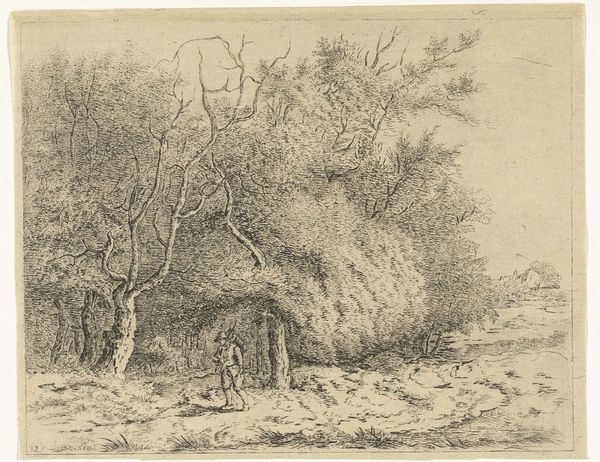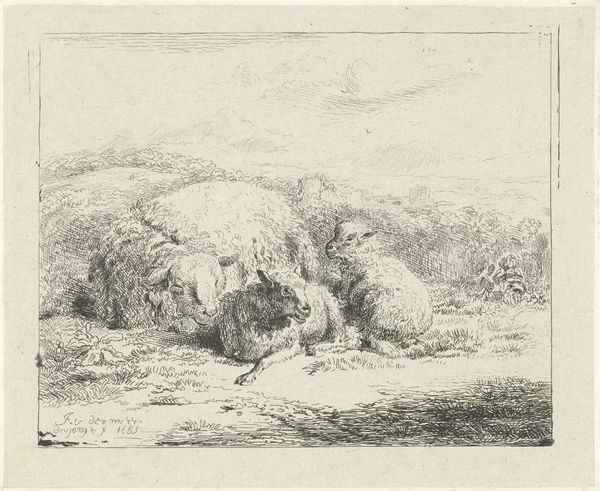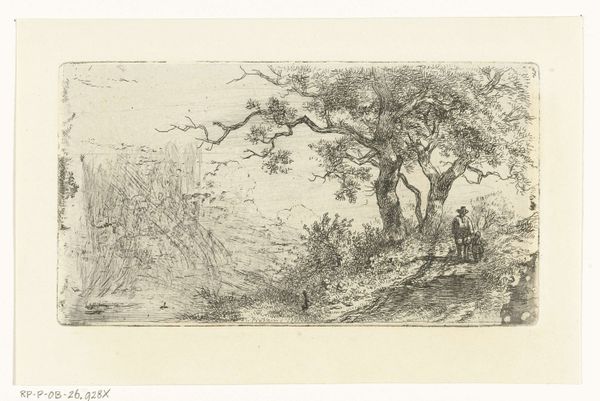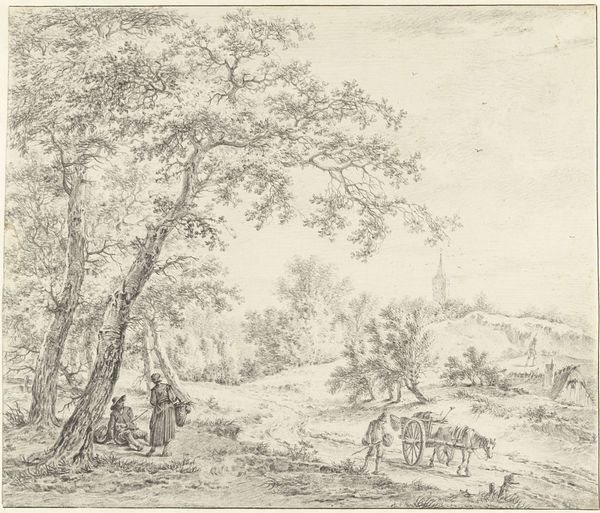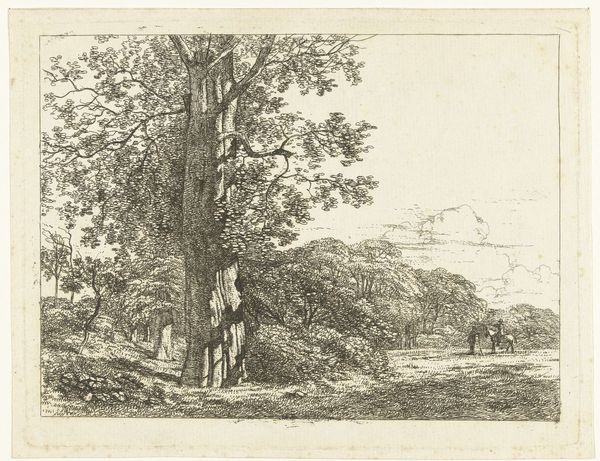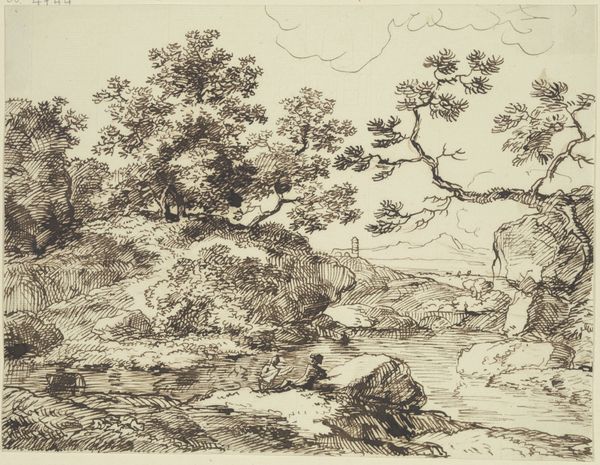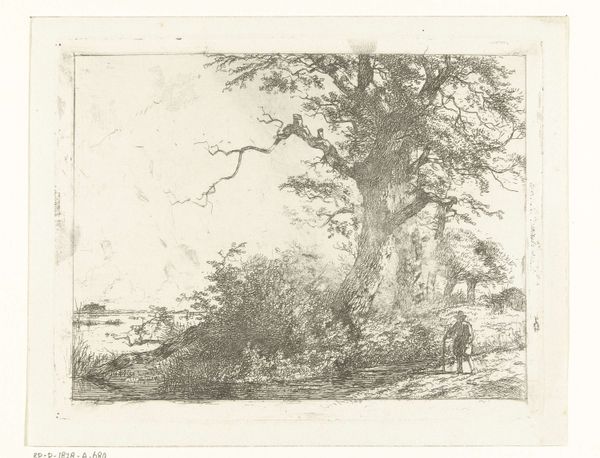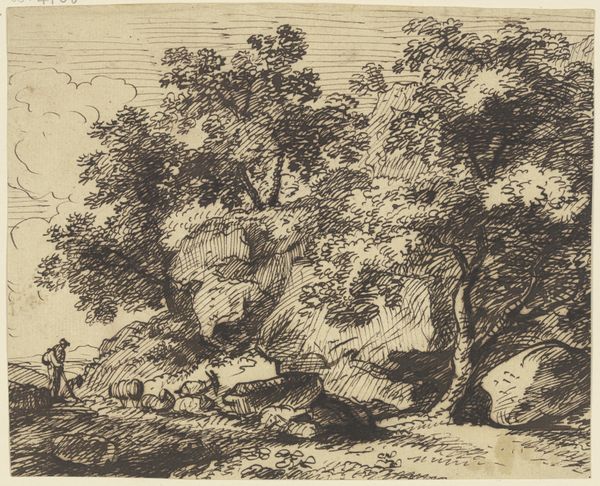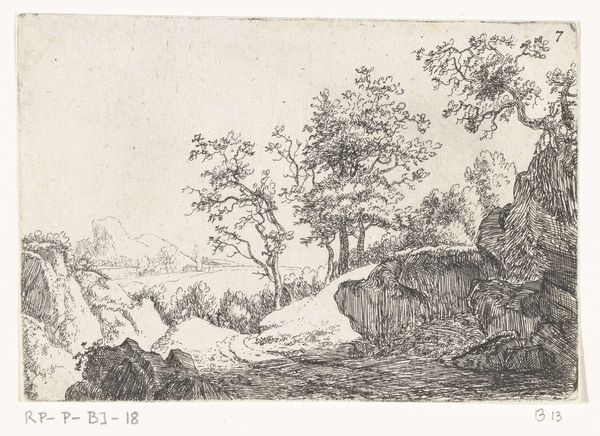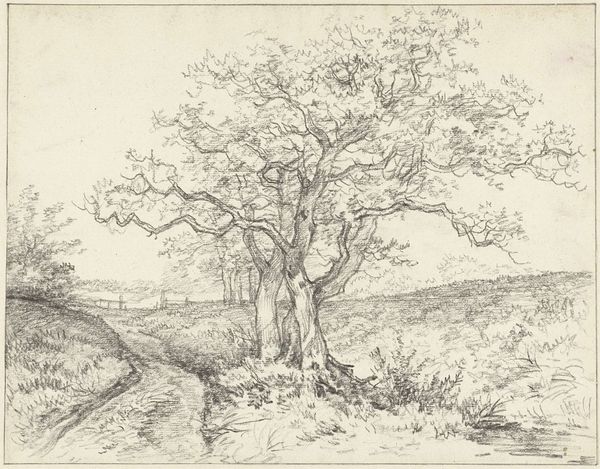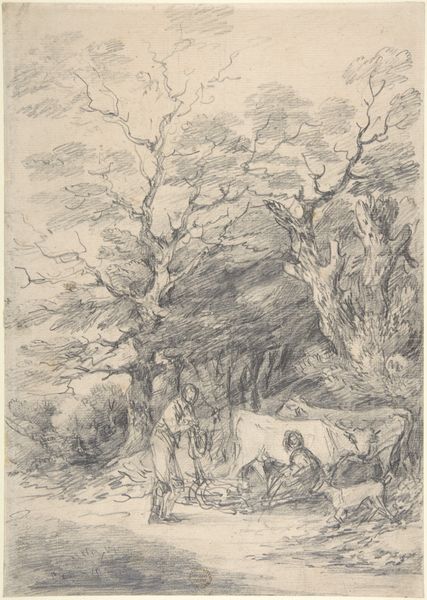
drawing, print, etching
#
drawing
#
pen drawing
# print
#
etching
#
landscape
#
romanticism
Dimensions: height 195 mm, width 243 mm
Copyright: Rijks Museum: Open Domain
Editor: This is "Wandelaar langs de bosrand," which translates to "Wanderer along the forest edge," made sometime between 1796 and 1856 by Reinierus Albertus Ludovicus baron van Isendoorn à Blois. It’s a pen drawing turned etching. It's remarkably detailed, given the medium. I'm immediately drawn to the lone figure, but I'm curious what meaning you see in it? Curator: What strikes me is the intersection of Romantic ideals and social commentary embedded in this seemingly simple landscape. This piece emerges from a period where nature became a site for both sublime experience and social critique. How might the 'wanderer' figure challenge or uphold societal norms through his interaction with this 'bosrand'? Editor: Well, the wanderer seems small against the vastness of the forest. Is that commentary on humanity's place in nature? Curator: Precisely. Romanticism frequently employed this juxtaposition to highlight the power of nature over the individual. But also, consider the context: land ownership and access were deeply political. Who was allowed to "wander" freely and who was restricted? Did images such as this reinforce idealized social roles of freedom that did not universally exist? Editor: So the image isn't just about pretty scenery; it's also hinting at issues of class and access? Curator: Exactly. Furthermore, etchings and prints like this democratized art, making images available to a broader public, which allowed new dialogues concerning access and aesthetics to evolve. The accessibility and distribution method is core to its sociopolitical meaning. Editor: That gives me a totally different perspective. It's not just a pretty picture of a man in the woods. It shows a snapshot into social tensions about land, and about access to imagery. Curator: Indeed, seeing art through its historical production unveils fascinating nuances. These works carry potent social echoes.
Comments
No comments
Be the first to comment and join the conversation on the ultimate creative platform.
